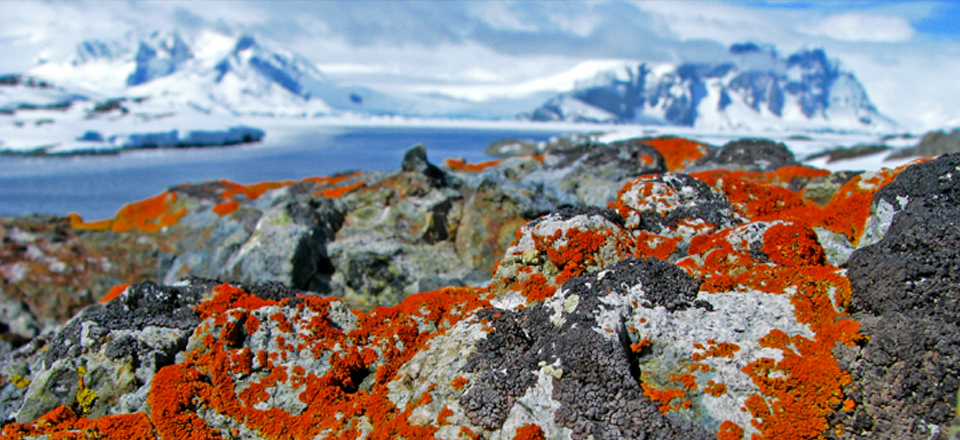Species and communities have long been measured for the purpose of assessing the broader condition of habitats or environments. More recently bioindicator systems are also being used to assess and monitor the performance of biodiversity policy, both nationally and globally. Our research in this area currently focuses on identifying minimum information sets (using Essential Biodiversity Variables) for assessing and monitoring the state of biological invasion from sub-national to global scales.
Examples of our work in this area:
A global biodiversity observing system to unite monitoring and guide action.
Gonzalez, A., Vihervaara, P., Balvanera, P., Bates, A. E., Bayraktarov, E., Bellingham, P. J., Bruder, A., Campbell, J., Catchen, M. D., & Cavender-Bares, J. 2023. A global biodiversity observing system to unite monitoring and guide action. Nature ecology & evolution, 7(12), 1947-1952. Doi: 10.3897/biss.7.110732
Including a diverse set of voices to address biological invasions.
Nunez, M. A., August, T., Bacher, S., Galil, B. S., Hulme, P. E., Ikeda, T., McGeoch, M. A., Ordonez, A., Rahlao, S., Truong, T. R., Pauchard, A., Roy, H. E., Sankaran, K. V., Schwindt, E., Seebens, H., Sheppard, A. W., Stoett, P., Vandvik, V., & Meyerson, L. A. 2024. Including a diverse set of voices to address biological invasions. Trends Ecol Evol, 39(5), 409-412. Doi: 10.1016/j.tree.2024.02.009
Introducing the global register of introduced and invasive species.
Pagad, S., Genovesi, P., Carnevali, L., Schigel, D., & McGeoch, M. A. 2018. Introducing the global register of introduced and invasive species. Scientific data, 5(1), 1-12. Doi:10.1038/sdata.2017.202
Essential biodiversity variables for mapping and monitoring species populations.
Jetz, W., McGeoch, M.A., Guralnick, R., Ferrier, S., Beck, J., Costello, M.J., Fernandez, M., Geller, G.N., Keil, P., Merow, C., Meyer, C., Muller-Karger, F.E., Pereira, H.M, Regan, E.C., Schmeller, D.S., Turak, E. 2019. Essential biodiversity variables for mapping and monitoring species populations. Nature Ecology & Evolution 3, pp 539-551. Doi:10.1038/s41559-019-0826-1
The power to detect regional declines in common bird populations using continental monitoring data.
Baker, D.J., Clarke, R.H., McGeoch, M.A. 2019. The power to detect regional declines in common bird populations using continental monitoring data. Ecological Applications 29. Doi:10.1002/eap.1918
Measure and Reduce the Harm Caused by Biological Invasions.
McGeoch, M.A., Jetz, W. 2019. Measure and Reduce the Harm Caused by Biological Invasions. One Earth 1, pp 171-174. Doi:10.1016/j.oneear.2019.10.003
Global indicators of biological invasion: species numbers, biodiversity impact and policy responses.
McGeoch, M.A., Butchart, S.H.M., Spear, D., Marais, E., Kleynhans, E.J., Symes, A. Chanson, J. & Hoffmann, M. 2010. Global indicators of biological invasion: species numbers, biodiversity impact and policy responses. Diversity & Distributions 16, 95-108. Doi:10.1111/j.1472-4642.2009.00633.x
Existing indicators do not adequately monitor progress toward meeting invasive alien species targets.
Vicente, J. R., Vaz, A. S.,Roige, M., Winter, M., Lenzner, B., Clarke, D. A., & McGeoch, M. A. 2022. Existing indicators do not adequately monitor progress toward meeting invasive alien species targets. Conservation Letters, e12918. Doi:10.1111/conl.12918
Achieving global biodiversity goals by 2050 requires urgent and integrated actions.
Leadley, P., Gonzalez, A.,Obura, D., Krug, C.B., Londoño-Murcia, M.C., Millette, K.L., Radulovici, R., Rankovic, A, Shannon, L.J., Archer, E., Armah, F.A., Bax, N., Chaudhari, K., Costello, M.J., Dávalos, L.M., de Oliveira Roque. F., DeClerck, F., Dee,. L.E., Essl, F., Ferrier, S., Genovesi, P., Guariguata, M.R., Hashimoto, S., Speranza, C.I., Isbell, F., Kok, M., Lavery, S.D., Leclère, D., Loyola, R., Lwasa, S., McGeoch, M., Mori, A.S., Nicholson, E., Ochoa, J.M., Öllerer, K., Polasky, S., Rondinini, C., Schroer, S., Selomane, O., Shen X., Strassburg, B.,Sumaila, U.R., Tittensor, D.P., Turak, E., Urbina, L., Vallejos, M., Vázquez-Domínguez, E., Verburg, P.H., Visconti, P., Woodley, S. & Xu, J. 2022 Achieving global biodiversity goals by 2050 requires urgent and integrated actions. One Earth 5, 597-603. Doi: 10.1016/j.oneear.2022.05.009
Related Links:
Biodiversity Indicators Partnership
GEO BON

